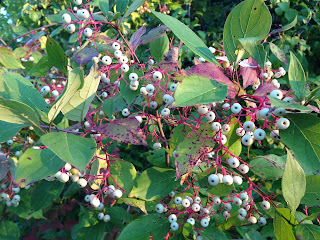The husband's family celebrates Thanksgiving in Virginia, and this year we decided to join them. I have an ancestral branch of the family that moved from Maine to Virginia in the 1850s so I also planned to do some research and visit some cemeteries. The research proved unproductive but I did learn quite a bit about the Civil War through some online articles and listening to the Washington Post's podcast Presidential. I also gained an appreciation of how far from home this family uprooted. However, even more productive than the research was the search for cemeteries and gravestones.
 The first cemetery, the Pohick Episcopal Church Cemetery in Lorton, VA was easy to access. Having seen a photo of the gravestone on Find-A-Grave, my eyes were honed in on a particular shape and a light color. It also helped to see a large family marker with the name "MORGAN" which is the married name of my great-great-great grandmother Flora Louise Chase. In addition to her stone, I also found several stones marking her children's final resting places.
The first cemetery, the Pohick Episcopal Church Cemetery in Lorton, VA was easy to access. Having seen a photo of the gravestone on Find-A-Grave, my eyes were honed in on a particular shape and a light color. It also helped to see a large family marker with the name "MORGAN" which is the married name of my great-great-great grandmother Flora Louise Chase. In addition to her stone, I also found several stones marking her children's final resting places.The second stop was at the St. James Cemetery in Falls Church, VA. This was also easy to access, and again I had a Find-A-Grave photo to work with. Relatively small, it was easy enough for us to survey the entire cemetery but we came up empty. Looking again at the reference photo, I noticed that the stone was surrounded by oak leaves so we focused our search to the areas beneath the oaks. I remembered a stone that had been lifted by oak roots. Brushing dry leaves aside, I found Marion Genevieve Richard's stone bearing her married name "BROWN". Marion is my great-great grandmother.
 Our third stop of the day was at the Congressional Cemetery in Washington DC. I had done my research at home and had a good idea which section of the cemetery I wanted - thank goodness, because this would have otherwise been impossible. We walked right to this distinctive double-marker stone. Before the Civil War, Thomas and Elvira Winship Chase lived in Farmington with their children where Thomas practiced law. After a few years in Chesterfield VA, they moved to Washington DC where they spent their remaining years.
Our third stop of the day was at the Congressional Cemetery in Washington DC. I had done my research at home and had a good idea which section of the cemetery I wanted - thank goodness, because this would have otherwise been impossible. We walked right to this distinctive double-marker stone. Before the Civil War, Thomas and Elvira Winship Chase lived in Farmington with their children where Thomas practiced law. After a few years in Chesterfield VA, they moved to Washington DC where they spent their remaining years.It was quite a thrill to find all three cemeteries and an even greater sense of satisfaction to locate the gravestones. Though I've downloaded the Find-A-Grave photos, I now feel as though I've brought these distant relatives "home".





































